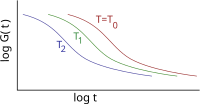
Photo from wikipedia
The development of Adapted Caussinus–Mestre Algorithm for homogenising Networks of Temperature series (ACMANT), one of the most successful homogenisation methods tested by the European project COST ES0601 (HOME) has been… Click to show full abstract
The development of Adapted Caussinus–Mestre Algorithm for homogenising Networks of Temperature series (ACMANT), one of the most successful homogenisation methods tested by the European project COST ES0601 (HOME) has been continued. The third generation of the software package ‘ACMANT3’ contains six programmes for homogenising temperature values or precipitation totals. These incorporate two models of the annual cycle of temperature biases and homogenisation either on a monthly or daily time scale. All ACMANT3 programmes are fully automatic and the method is therefore suitable for homogenising large datasets. This paper describes the theoretical background of ACMANT and the recent developments, which extend the capabilities, and hence, the application of the method. The most important novelties in ACMANT3 are: the ensemble pre-homogenisation with the exclusion of one potential reference composite in each ensemble member; the use of ordinary kriging for weighting reference composites; the assessment of seasonal cycle of temperature biases in case of irregular-shaped seasonal cycles. ACMANT3 also allows for homogenisation on the daily scale including for break timing assessment, gap filling and ANOVA application on the daily time scale. Examples of efficiency tests of monthly temperature homogenisation using artificially developed but realistic test datasets are presented. ACMANT3 can be characterized by improved efficiency in comparison with earlier ACMANT versions, high missing data tolerance and improved user friendliness. Discussion concerning when the use of an automatic homogenisation method is recommended is included, and some caveats in relation to how and when ACMANT3 should be applied are provided.
Journal Title: International Journal of Climatology
Year Published: 2017
Link to full text (if available)
Share on Social Media: Sign Up to like & get
recommendations!